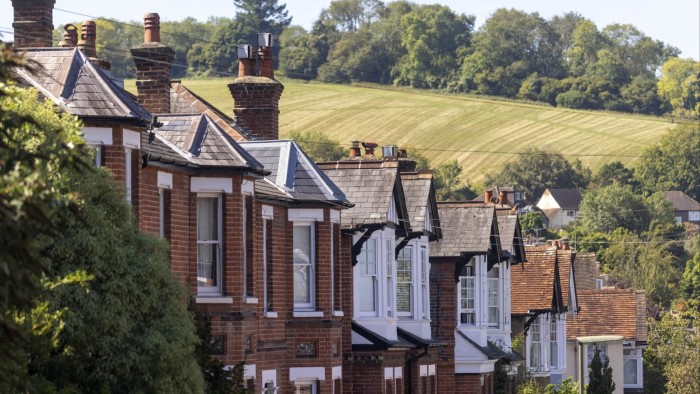
Unlock the Editor’s Digest for free
Roula Khalaf, Editor of the FT, selects her favourite stories in this weekly newsletter.
UK homeowners became much less indebted over the past decade as more of them paid off their mortgages and fewer first time buyers were able to take out new loans.
The collective loan-to-value of the UK’s privately owned housing dropped from 23.5 per cent in 2014 to 19.4 per cent last year, according to research by property group Savills, which also showed the total value of homes in the UK topped £9tn for the first time.
The lower levels of debt against the UK’s housing wealth reflects a long-term shift, with people who own their homes outright controlling a growing share of property and fewer first time buyers getting on the housing ladder.
“The baby boomers have continued to build wealth having paid off their mortgage debt,” said Lucian Cook, head of residential research at Savills. “Millennials and Gen Z have had much less opportunity to work their way up the housing ladder profitably.”
The high cost of housing and the need to save for a large deposit have fuelled concerns that a growing number of people are locked out of home ownership and unable to amass property wealth like previous generations.
But the data also shows a shift within the ranks of homeowners, with outright owners, who tend to be older, controlling a larger share of the nation’s housing.

The value of homes owned outright has increased 66 per cent over the decade, compared with 55 per cent for homes owned with a mortgage, Savills reported.
The bigger increase in the value of homes owned outright also reflects the number of people paying off their mortgage. In England, the number of outright owners grew faster than the overall number of homeowners during the decade, according to the official English Housing Survey.
Across the UK, the number of owner-occupier mortgages fell from 9.5mn in 2014 to 8.7mn last year, according to UK Finance.

New buyers have been held back as homes have become increasingly unaffordable. The average home in England cost seven times average earnings in 2014, according to the ONS. Affordability worsened to nine times earnings in 2021, although it has since improved to 8.25 times in 2023.
Sir Keir Starmer’s government is hoping to boost home ownership by increasing house building — and has also thrown its support behind proposals to re-examine mortgage regulation to make it easier for people to get loans.
The regulations, largely drawn up after the 2008 financial crisis, limit how much banks can lend as a multiple of a person’s income or the value of a property and require stress tests to check if borrowers can cope with future interest rate rises.
Cook said much of the shift in ownership was “down to demographics and the accessibility to home ownership of different generations. But it also reflects the role which mortgage regulation has played in restricting debt-driven price growth in the housing market”.

The sharp rise in interest rates starting in 2022 put mortgages further out of reach for many households, and prompted a brief dip in house prices.
Savills recorded a drop in the total value of UK homes in 2023 for the first time since it started tracking in 2012. But the £22bn hit was more than recovered with a £346bn gain last year.
London and the South East continue to hold the greatest housing wealth, but have grown more slowly in recent years as already stretched prices limited further gains.

Homes in two London boroughs — Westminster, and Kensington and Chelsea — were still worth more than all the properties in the North East in 2024.
There were 341,068 first-time home purchases last year, according to Halifax, the lowest since 2017, excluding 2020 when the market was frozen by Covid lockdowns.
Last year’s figure marked an improvement on 2023, when high interest rates pushed the number of first-time buyers to the lowest in a decade. The average first time buyer deposit was £61,090 in 2024, rising to £124,688 in London.
